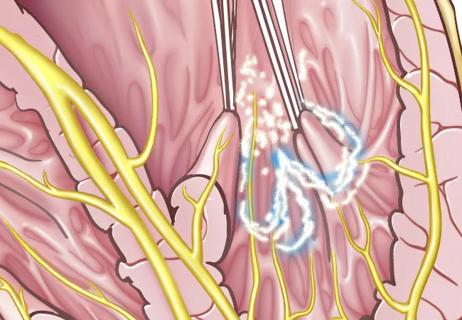Consortium makes key recommendations to improve prevention practices

Sudden cardiac arrest and death among children and young people can happen to anyone at any time. Experts say improving prevention efforts, such as a national screening program, is an ambitious but achievable goal that could save lives. New recommendations put forth by experts establish a path toward a new paradigm for primary and secondary prevention.
Advertisement
Cleveland Clinic is a non-profit academic medical center. Advertising on our site helps support our mission. We do not endorse non-Cleveland Clinic products or services. Policy
The consensus statement was led by the Cardiac Safety Research Consortium (CSRC), a group of experts and stakeholders from public, private and academic sectors, that first convened two decades ago to solve vexing issues in cardiovascular medicine. The group’s third and most recent think tank in 2024 builds on the momentum of the previous ones. In a full report, published in the American Heart Journal, the authors describe sudden cardiac death in the young (SCDY) and sudden cardiac arrest (SCA) as public health issues, discuss challenges in screening, posit new prevention strategies, and call for increased collaboration.
Current screening methods are falling short. So says, Peter Aziz, MD, a pediatric electrophysiologist at Cleveland Clinic and an author of the report. While economical, reasonable and endorsed by medical organizations, like the American Academy of Pediatrics and the American Heart Association, healthcare professionals must contend with several issues.
Currently, screening is assessed by obtaining a detailed family history and physical as a sports clearance measure. “As long as there are no red flags, then the patient is cleared to play,” says Dr. Aziz. “While that’s all well-intended and cost-effective, which is certainly part of the equation, this approach isn’t capturing everyone.”
Unknown or incomplete information about family cardiac history can complicate the clinical picture. And the bigger question: what if the child doesn’t participate in sports? Current screening is rooted in this assumption. With these issues in mind, the CSRC made the following consensus statements/recommendations.
Advertisement
Recognize sudden cardiac death and arrest in the young as a public health issue
Out-of-hospital cardiac arrest in children occurs more than 20,000 times per year, the authors note, with only about 10% surviving to hospital discharge. SCDY tends to capture a greater share of public attention and awareness, but Dr. Aziz stresses it’s a public health issue that can affect any child at any time. Improved primary and secondary prevention strategies are critical.
Establish a comprehensive national screening approach
Efforts must focus on inclusivity: athletes and nonathletes, the symptomatic and asymptomatic, those with a positive family history and those without. Countries like Italy and Japan have implemented a national screening processes that are comprehensive and longitudinal. While there is no one-size-fits -all approach and each country is different, Dr. Aziz lauds the effort and adds, “If it’s going to be universal and uniform, this function would require a group of healthcare professionals to lead the initiative and make screening accessible long term, either through the school system or routine well visits.”
Utilize emerging technology to automate screening
AI-based tools, like automated screening of electrocardiograms (ECGs), may help address an existing roadblock for a national screening initiative. Use of ECGs could contribute to a higher screening quality, but also introduce unintended and, frankly, untenable consequences, like increased costs, additional time and managing false positives.
Advertisement
Dr. Aziz notes that the group is partnering with organizations like Who We Play For, to help cultivate and integrate such tools into practice. “With a repository of ECG data on kids, we are exploring how we use that data to inform our practices, figure out what's normal, what's not normal, and then hopefully feed an AI system to be able to solve that problem for us, too,” he explains.
Create tailored education/response plans for community readiness
While a national screening program would address primary prevention, the CSRC also notes improving secondary prevention efforts. We need to be asking, “Is the community equipped to manage a child who goes into cardiac arrest? The outcomes for pediatric cardiac arrest are dismal outside of the hospital,” notes Dr. Aziz.
Providers, educators and others who work closely with children and who may be likely to encounter a SCA or SCDY event should be adequately trained to handle a cardiac emergency. High-profile media attention on sudden cardiac arrest events, like in the case of NFL player DeMar Hamlin during a televised game, highlights a positive outcome in secondary prevention efforts. Dr. Aziz is hopeful that people learn from this positive outcome and others like it, adding that CPR training and accessible AEDs are key aspects of effective secondary prevention.
Strengthen collaboration among all stakeholders
Finally, the authors assert that stronger partnership is needed to connect the work happening in the silos of academic and organized medicine, governmental, nonprofit and industry groups to develop a unified front for this effort. This will help usher in widespread consensus and adoption of new guidelines and practices, bringing prevention of SCDY and SCA into a new era.
Advertisement
Advertisement

Guidance on the often-fatal condition through an interventional cardiology lens

Study identifies a cohort of low-risk patients, finds LVEF predicts late VT/VF in those at higher risk

JAMA study adds new data to decades-long guidance

Integrated care model reduces length of stay, improves outpatient pain management

A closer look at the impact on procedures and patient outcomes

Experts advise thorough assessment of right ventricle and reinforcement of tricuspid valve

Study also finds that 26% of children with cancer have mutations in DNA repair genes

A closer look at current uses and future opportunities